 |
||
|
Illustration: Nicholas Wilton
|
Science for Life
Carnegie Museum of Natural History, a place known for great scientific breakthroughs, has announced perhaps its biggest discovery of all: its future course. On a recent taxi ride from Pittsburgh International Airport, the cab driver asked Sam Taylor where he worked. “I’m director of Carnegie Museum of Natural History,” Taylor replied. “That’s my favorite place in the city—I mean, it’s absolutely my favorite place,” the driver exclaimed. “I love it there.” “When was the last time you visited the museum?” asked Taylor, interrupting the driver’s gush of praise midstream. “Oh, it’s been years,” he said. Taylor uses the exchange to exemplify what he feels is one of the toughest dilemmas facing Carnegie Museum of Natural History today. The museum rates high on the scale of “the heritage element,” he notes. “I don’t think there is a soul who grew up in Pittsburgh who doesn’t have a special place in their heart for childhood experiences in the museum.” He adds that visitors surveyed about what they like best about the museum often cite the familiar feeling of seeing the same dinosaurs and dioramas that captivated them as children. But to Taylor’s frustration, that’s the same answer they give when asked what they like least about the museum, which also rates high on the scale of what he describes as “nice old place, not relevant to my life” for his cab driver and countless others. The challenge: revitalize Carnegie Museum of Natural History in a way that will make it more engaging and relevant to contemporary audiences without sacrificing the tradition cherished by so many. To address the challenge, the museum is reorganizing into five new strategic centers: the Center for Lifelong Science Learning, which debuted in November 2010; the Center for Biodiversity and Ecosystem Management, which launched this past January; and the Centers for Evolutionary Biology, Scientific Visualization and Computation, and World Cultures and Diversity. Taylor says the concept came to him last year after the museum completed its new strategic plan. He was reading the National Science Foundation’s (NSF) 2011 funding priorities and noticed his staff did work in almost every area listed. “I wrote out the names of five interdisciplinary centers based on those NSF budget categories and the priorities in our strategic plan,” he recounts. “It was intended to just be fodder for discussion among our staff, board, and leadership.”
“It’s an intelligent, careful exploration of the next generation of the natural history museum. Carnegie Museum is looking at the world in a more holistic way, which is the reality of 21st-century science, where research occurs across disciplines.”- Robert “Mac” West, founder of Informal Learning Experiences Inc. in Washington, D.C.It has become so much more—what experts are describing as an ambitious step forward, not just for Carnegie Museum of Natural History but potentially for the future of natural history museums worldwide. 21st-century scienceBy convention, natural history museums are organized around the biological classifications of their collections, with curatorial departments such as botany, birds, and mammals. While other institutions have created lone interdisciplinary centers, Carnegie Museum of Natural History is the first to totally restructure itself in this way, according to respected museum consultant Robert “Mac” West, founder of Informal Learning Experiences Inc. in Washington, D.C., and former director of Carnegie Museum of Natural History from 1983 to 1986. “It’s an intelligent, careful exploration of the next generation of the natural history museum,” West says. “Carnegie Museum is looking at the world in a more holistic way, which is the reality of 21st-century science, where research occurs across disciplines.” Taylor is hopeful these changes will raise public interest in the museum and create new funding opportunities. “In the past, we described what we have. This new structure focuses on what we do,” he explains. “That’s really important because the vast majority of the public doesn’t know that we’re a research institution where scientific collections are actively used by scientists to answer important ecological and environmental questions of today. Reframing our work in this way will help us create more opportunities for adults, children, and educators to engage in research, outreach, and restoration projects at the museum and our biological field station, Powdermill Nature Reserve.”
“It’s very nice to have a warm and fuzzy vision of the museum as a place to take the grandkids to see the dinosaurs,” he says. “But it’s another thing for people to feel that they actually have a stake in what we’re doing—that they can actually support and enjoy the museum. You’ll hear me say: it’s one of the best places to discover, explore, and celebrate how life works.” Better engaging the public could also help establish the region as a leader in science literacy and learning, says Joseph Guyaux, chairman of the museum’s board of directors and president of The PNC Financial Services Group, Inc. Last November, a $1 million leadership grant from the PNC Foundation provided the seed money for the new Center for Lifelong Science Learning—the first of the five centers to begin work. Guyaux recalls his astonishment while meeting with all the museum curators after being appointed board chair in 2008. “I have lived in Pittsburgh all of my life and been involved with the organization for many years and had no idea the amount of stuff that went on here,” he says. “One of my hopes is that we are able to showcase this research to western Pennsylvania and to the world, and demonstrate the scientific relevance and impact of our work.” Understanding how we learnAs director of the Center for Lifelong Science Learning, Mary Ann Steiner is striving to make the vision a reality. Steiner is an expert in the field of museum-community collaborations and comes to Carnegie Museums from the Science Museum of Minnesota where she served as director of its Youth Science Center, and, more recently, the University of Pittsburgh, where she’s pursuing her Ph.D. She’s joined by Kevin Crowley, founder and director of Pitt’s Center for Learning in Out-of-School Environments (UPCLOSE), who received a two-year William T. Grant Foundation Distinguished Fellowship to help organize the new center. They’re working towards bringing together museum staff and various partners to conduct research on how people learn about science outside of school classrooms so they can then apply those findings to new museum educational programs and exhibitions.
Mary Ann Steiner, director of the Center for Lifelong Science Learning, is teaming up with fellow informal-learning expert Kevin Crowley.
Photo: Joshua Franzos“It’s so interesting to look at the difference in learning that happens when you do it for social and community reasons instead of in school or other formal settings,” Steiner notes. “What is the added value about being a museum? How does that influence people’s excitement about learning? How can we start to measure the extent to which we’re having an impact on how much people enjoy and use science in their lives? Those are our driving questions.”
Steiner and Crowley envision people from communities across the city asking questions about climate change and discussing potential solutions as they learn about the issue through a web of schools, museums, zoos, community groups, and other partners. “The natural history museum is one node in this ecology of learning opportunities,” Crowley says. “You can drop into the museum and learn about science for a couple hours, but the real goal is to have that experience build on other experiences people encounter.”
“What is the added value about being a museum? How does that influence people’s excitement about learning? How can we start to measure the extent to which we’re having an impact on how much people enjoy and use science in their lives? Those are our driving questions.”
- Mary Ann Steiner, director of the museum’s Center for Lifelong Science LearningThat “stickiness” is especially critical to Stephen Pellathy and Brian Corr. The pair is rewriting the K-12 science curriculum at Pittsburgh Public Schools, which is developing a partnership with the Center for Lifelong Science Learning. To make the museum experience truly worthwhile for students, they say it must dovetail closely with what goes on in the classroom. “We don’t want to pursue one-stop, ‘wow factor’ field trips anymore,” says Pellathy, the district’s science curriculum specialist. “We want the museum experience to support our curriculum and for the trips to link and strongly support our science learning goals.” For example, through another federally-funded grant, the district has teamed with the museum to give students access to NASA climate data in a science-based game that aligns with Pittsburgh Public Schools’ earth science curriculum. Intellectual integrationSimilar partnerships are expected to form through the Center for Biodiversity and Ecosystem Management, which began its work this past January thanks to a gift from the R.P. Simmons Family Foundation. The center’s mission is to conduct interdisciplinary research and create public programs that address pressing questions about environmental change and its impact on life and Earth. Its key resource will be Powdermill Nature Reserve, the museum’s biological field station in the Laurel Highlands best known for its 50-year-long bird banding program. John Wenzel, the center’s director, says one of his goals is to better integrate the current and still-to-be-realized work at Powdermill with the work at the museum’s main Oakland facility.
John Wenzel, director of the new Center for Biodiversity and Ecosystem Management.
Photo: Joshua Franzos“People can experience firsthand the biodiversity of our rich woodland forests at Powdermill,” Wenzel says. “And we want to weave that in through our center with the lessons we are teaching in the halls of the museum.” Wenzel began studying insects at age 19, working as a field assistant in Panama to legendary biologist Edward O. Wilson. An expert on the evolution of social behavior in insects, he spent the past 17 years as a professor in the department of evolution, ecology, and organismal biology at The Ohio State University (OSU). Previously, he served as director of the OSU Museum of Biological Diversity. Scientists working within the Center for Biodiversity and Ecosystem Management will collaborate with exhibit designers, educators, and community partners to bring their research out from tucked away offices and labs to the gallery floors, and beyond. They’ll also be asked to brainstorm together about how their work on individual collections might help tell bigger stories of habitat loss, collapsing ecosystems, and the worldwide biodiversity crisis.
Nothing makes issues like biodiversity and global warming more relevant than hands-on science, which is what happens daily at Powdermill Nature Reserve.
Photo: Mindy Mcnaugher“We’re serious about elevating the importance of collections by encouraging interdisciplinary work,” Wenzel says. “This makes sense because people in different scientific fields already share a common mission to use collections and resources to tell the modern narratives people want and need to hear about the history of Earth.”
“It’s very nice to have a warm and fuzzy vision of the museum as a place to take the grandkids to see the dinosaurs, but it’s another thing for people to feel that they actually have a stake in what we’re doing.”– Sam Taylor, director of Carnegie Museum of Natural HistoryThis could happen in any number of ways: through exhibitions focused on critical issues such as Marcellus Shale natural gas drilling or the honeybee colony collapse; through exhibitions such as Population Impact, which explores how Carnegie scientists are conducting research that spotlights how human population growth might be impacting white-tailed deer locally and plant and animal species in Hispaniola; and through workshops and symposia organized around similar themes, and presented in a way that will be meaningful to the public, not just fellow scientists. It could also happen by adding educators and hands-on activities in the galleries, much like the hugely successful Discovery Room in the basement of the Natural History Museum, where children learn by touching and doing. “Why should those experiences be confined to just one room?” Taylor asks. “We would like to make the entire museum a discovery room, and not just for kids.” Five rallying pointsThe museum expects to improve public engagement through three additional centers, which will begin work as funding is secured.
Taylor emphasizes that throughout the museum’s 116-year history, the lion’s share of its scientific research has been in evolutionary biology. “We have this extraordinary asset of 22 million specimens that are the evidence for evolution,” he says. “If there’s any place that can facilitate education about evolution—that can say, come take a look and draw your own conclusions—it is here.” The museum’s plan for the Center for Scientific Visualization and Computation is to enlist computer experts from area universities to help museum scientists analyze the Museum-goers can also look forward to revitalized programs and exhibitions on human evolution and cultural development through the Center for World Cultures and Diversity. Taylor notes that the museum’s anthropology staff has dwindled in recent years, even though three of its largest exhibition halls are focused in this area. “We are at a critical moment of truth for anthropology,” Taylor says. “I don’t want to see it die, and I think the center can be a rallying point.” To this point, the museum will host the award-winning exhibition RACE: Are we so different? in 2013. According to Taylor, all five centers will be just that: rallying points to create the natural history museum of the future—a place that is relevant, engaging, and very much alive. The goal is to bring people like Taylor’s cab driver back into the doors of the museum time and again in search of what’s cutting-edge, dynamic, and, hopefully, inspiring—with a healthy dose of heritage on the side. When asked whether his colleagues view his plan as genius or crazy, Taylor replies, “Both.” He adds, “There’s a lot of excitement, and people all over the world are watching us closely.” A case in point: On a recent trip to China, a high-ranking government offical with oversight for museums said to him one morning, “So tell me about your reorganization.”
|
|
Reclaiming Paul Thek · Chasing Beauty · Setting Andy to Music · Special: Salute to David Hillenbrand · NewsWorthy · Face Time: Ragnar Kjartansson · Science & Nature: 100 Years of Homemade Lightning · Artistic License: Something to Believe In · The Big Picture
 |
Copyright © 2017 CARNEGIE Magazine. All rights reserved. |

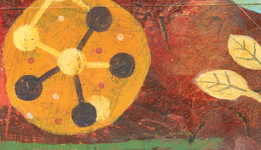 A broader, more meaningful communication of the scientific research that goes on largely behind the scenes is essential to the museum’s financial future, Taylor adds. Without knowledge of—and participation in—this work, there’s no reason for the community to lend its support.
A broader, more meaningful communication of the scientific research that goes on largely behind the scenes is essential to the museum’s financial future, Taylor adds. Without knowledge of—and participation in—this work, there’s no reason for the community to lend its support.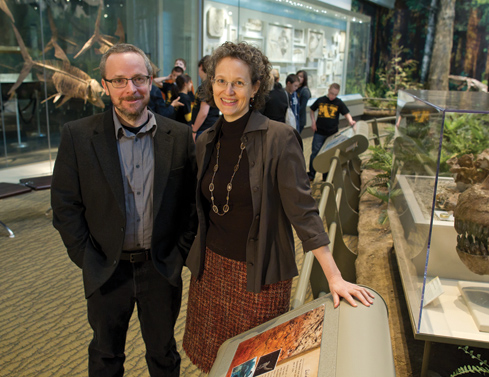
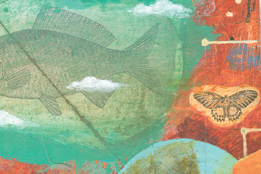 One of the first projects of the new center is parti-cipation in the NSF-funded Urban Climate Change Education Partnership, a national collaboration among six informal science education institutions to develop effective methods for increasing literacy about the topic of climate change within urban communities. “It’s a topic that kind of eludes the public—it’s overwhelming and a little bit depressing, like a train you can’t stop,” Steiner says. “We want to figure out how to get a broader message about climate change, and help people break it down into pieces they could grab onto, understand, and really become involved in.”
One of the first projects of the new center is parti-cipation in the NSF-funded Urban Climate Change Education Partnership, a national collaboration among six informal science education institutions to develop effective methods for increasing literacy about the topic of climate change within urban communities. “It’s a topic that kind of eludes the public—it’s overwhelming and a little bit depressing, like a train you can’t stop,” Steiner says. “We want to figure out how to get a broader message about climate change, and help people break it down into pieces they could grab onto, understand, and really become involved in.”
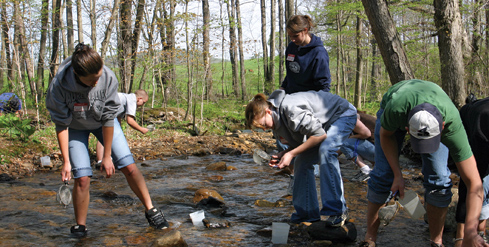
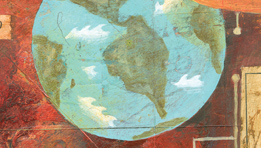 The Center for Evolutionary Biology will bring together researchers in paleontology, invertebrate zoology (insects), and across other fields that enhance the understanding of evolutionary science. The center will also educate the public about evolution—an especially complex and difficult subject to teach. In preparation for the center’s launch, the traveling exhibition Explore Evolution opened in February.
The Center for Evolutionary Biology will bring together researchers in paleontology, invertebrate zoology (insects), and across other fields that enhance the understanding of evolutionary science. The center will also educate the public about evolution—an especially complex and difficult subject to teach. In preparation for the center’s launch, the traveling exhibition Explore Evolution opened in February.